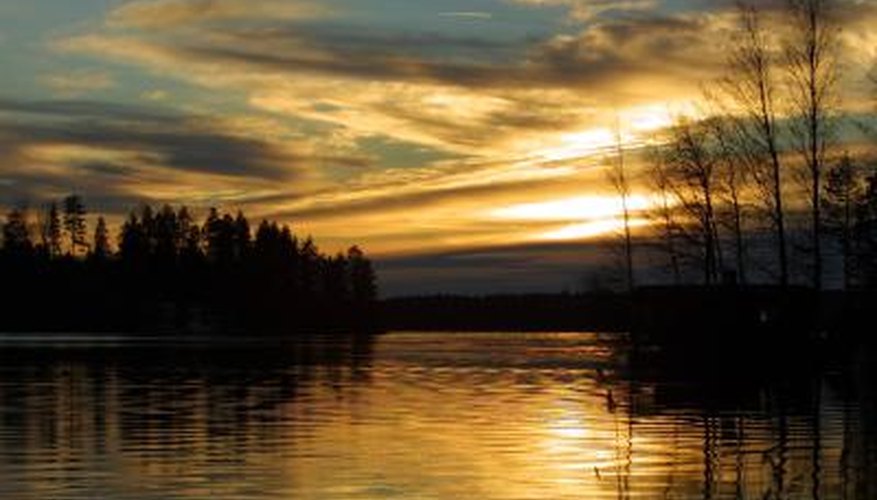Several species of flies need water to support their larval forms. While mosquitoes are perhaps the most well known, gnats can also be a nuisance. The biting buffalo gnats as well as the non-biting varieties can breed in your backyard pond. Control is not easy, but there are some things you can do to mitigate the annoyance.
Buffalo Gnats
Also called turkey gnats, these biting pests are not gnats at all but are black flies and they can be quite troublesome. While they primarily attack and feed on the blood of birds and cattle, black flies can form in large swarms and bite people as well. Black fly larvae require cool, fast moving water to live. Streams, runoff from snow melt or even water features in ponds like waterfalls or fountains can support black fly larvae as they glean nutrients from the clear, clean water. Trailing vegetation offers an excellent place for egg laying and feeding. Their life cycle is fast, taking only about three weeks from egg laying to adulthood. There are between two and four generations per year.
- Also called turkey gnats, these biting pests are not gnats at all but are black flies and they can be quite troublesome.
- Streams, runoff from snow melt or even water features in ponds like waterfalls or fountains can support black fly larvae as they glean nutrients from the clear, clean water.
Control
Control can be difficult because of the wide range in black fly habitat. If black flies invade your pond and swarm around your home, wearing light coloured clothing can help reduce the chance of a bite. Wear a light coloured hat that covers your ears as well. If larvae hatch in your pond year after year you can try adding pesticides containing the bacteria Bacillus thuringiensis var. israelensis to your water. This bacteria only attacks fly larvae and is safe for humans, animals and beneficial insects. Adults are difficult to kill as they are highly migratory and highly mobile. Permethrin based sprays may be the most effective.
- Control can be difficult because of the wide range in black fly habitat.
- If black flies invade your pond and swarm around your home, wearing light coloured clothing can help reduce the chance of a bite.
Non-Biting Gnats
There are several species of non-biting flies commonly called gnats or midges that breed in standing water like ponds, pools or yard debris like buckets or old tires containing rain water. While not threatening or damaging these flies can breed in large numbers and their swarms may be a nuisance. Larvae feed on living and dead plant matter but adults don't eat at all. A gnat's entire life cycle may take 4 to 5 weeks to complete but adults only live long enough to swarm, mate and lay eggs. There can be several generations in a summer.
- There are several species of non-biting flies commonly called gnats or midges that breed in standing water like ponds, pools or yard debris like buckets or old tires containing rain water.
Control
Non-biting gnats, much like black flies, are difficult to control. Aerosol sprays can be effective for small areas but only kill on contact; there is no residual effect. Adults may rest on vegetation during the day so spraying surrounding plants with products containing malathion or carbaryl may offer some measure of control. Entomologists at the University of Kentucky caution against adding pesticides to any water source since there is potential to contaminate groundwater.
- Non-biting gnats, much like black flies, are difficult to control.
- Entomologists at the University of Kentucky caution against adding pesticides to any water source since there is potential to contaminate groundwater.
